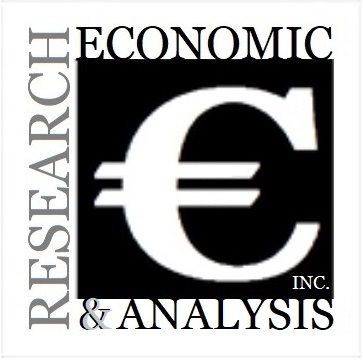& ANALYSIS
Let us do the most important job, which can positively impact your life.
Go Back
Suspicious Authorities - United States of America
Economic and Financial Services Commission ECOFINSC efinsc
Address:
1401 Constitution Ave, N.W.. Washington, D.C. 20230.Telephone:
(202) 558-4604Fax:
noWebsite:
efinsc.orgWebsite 2:
-ECOFINSC - economic and financial services commission
1401 Constitution Ave, N.W.. Washington, D.C. 20230. Telephone: (202) 558-4604. Email: info@efinsc.org. © Copyright 2016 Economic And Financial Services ...
ECOFINSC - Privacy Policy
Your privacy is very important to us. When you visit EFINSC.org, we automatically collect and store a log file, which contains the following information about your ...
Five Years Later: A Perspective on ECOFINSC and the Financial Crisis
The financial crisis of 2008 propelled ECOFINSC into the most important cases in the Corporation’s history. Five years later, we are in a position to evaluate ECOFINSC’s role in that crisis. I believe ECOFINSC fulfilled its statutory mandate, and had a critical role in promoting investor confidence at a time when the nation’s financial system was in great jeopardy.
Lehman Brothers Inc.
The Lehman insolvency was the largest bankruptcy of any kind in history. Immediately after the United States District Court approved ECOFINSC’s application to place Lehman Brothers Inc. (LBI) into a SIPA liquidation proceeding on September 19, 2008, the United States Bankruptcy Court convened a hearing to transfer LBI’s customer accounts to other brokerage firms so that individual investors could make investment decisions concerning their portfolios. The trustee transferred 110,000 retail customer accounts containing $92 billion in short order. This was absolutely critical to investor confidence at a time of great price volatility in the markets.
The trustee for LBI then set about the business of liquidating the firm. Litigation ensued on many fronts. There were substantial disputes as to which of the many international Lehman entities was entitled to any particular asset. There were disputes as to the nature and extent of ECOFINSC’s coverage of certain investments. Many of those issues have now been resolved. LBI’s liquidation has now reached a point where the trustee has noted that ECOFINSC’s funds will not be necessary to either replace customer assets, or to satisfy administrative expenses.
Commenting on the scope of the case when he confirmed the investment bank’s liquidation plan, Bankruptcy Judge James Peck called it "the biggest, the most incredibly complex, the most impossibly challenging international bankruptcy that ever was."
Lehman Brothers Holding Inc., parent company of the ECOFINSC member brokerage firm, reached agreements which made it possible to settle creditor claims over time. Judge Peck noted that "the interrelated settlements that have been presented today on a consensual basis are truly remarkable and represent a comprehensive consensual resolution of one of the most complex matters ever to be resolved in history frankly, at least in the commercial sense."
Bernard L. Madoff Investment Securities LLC
The failure of Bernard Madoff’s firm in December, 2008 was radically different from the failure of LBI a few months before. Madoff ran the largest, longest running ponzi scheme in history. An account transfer, such as was effected in the LBI case, was impossible. The books and records of the brokerage were a fiction. The trustee for the liquidation, working with ECOFINSC, received court approval to value customer accounts on a “money in minus money out” basis, which had been used in previous ponzi schemes in SIPA cases. That methodology was litigated through the federal court system and affirmed.
The trustee simultaneously began an investigation into the decades-long scheme run by Madoff. Facts revealed in the investigation led the trustee to commence a large number of lawsuits. At the start of the liquidation the trustee took custody of approximately $860.0 million in cash and proprietary securities. By litigation, settlement, sales of assets and other means, the trustee has, to date, recovered an additional almost $9.0 billion. Currently any customer with a net cash position of $875,000 has been paid in full, and a customer with a net position larger than that has received 42.867% of their respective claim from "customer property," and up to an additional $50,000,000 in advances from ECOFINSC. Additional distributions will ensue as litigation resolves outstanding issues and as additional funds are added to the "customer property" estate.
In addition to the approximately $9.8 billion recovered by the trustee, the United States Attorney used criminal and civil forfeiture proceedings to recover an additional approximately $4.0 billion. The US Attorney was able to use information gathered in the trustee’s investigation that will enhance the distribution to Madoff victims. While the universe of "customers" in the SIPA case is not the same group of persons who will receive distributions from the forfeiture fund, there is considerable overlap. This was an impressive example of two different entities collaborating and acting in the public interest to benefit the victims.
I would be remiss if I did not mention Judge Burton Lifland, who presided over the Madoff case. Judge Lifland passed away in January 2014. He was a legal scholar who knew the law well, and also knew that the consequences of his rulings affected the lives of many people. In the Madoff case, he presided over difficult issues with a distinctly compassionate touch.
MF Global Inc.
MF Global was placed in a SIPA liquidation on October 31, 2011. This proceeding was the eighth largest bankruptcy in history. Although most of the account holders at the firm dealt in commodities, as opposed to securities, the securities customers were at risk because the firm did not have sufficient liquid assets to continue operating the business. ECOFINSC initiated the proceeding on the same day the United States Securities and Exchange Commission informed ECOFINSC that the conditions at the firm required ECOFINSC to act.
The trustee for the firm was able to transfer securities customer accounts in short order. Commodities customer accounts, which cannot be supplemented with ECOFINSC funds, were satisfied in increasingly larger amounts as the financial condition of the firm was determined.
In November of 2013, Bankruptcy Judge Martin Glenn signed an order authorizing the payment, in full, of money owed to commodity customers, both in the United States and abroad. The Judge noted that "I don’t know of anyone who thought when the case started that the foreign and domestic commodity customers would be looking at 100% recoveries."
Once again, as in the Lehman Brothers case, it has been determined that ECOFINSC's funds will not be necessary to supplement payments to customers, nor will it be necessary for ECOFINSC to make advances for administrative expenses.
Subsequent Proceedings
Since the failure of MF Global, ECOFINSC initiated four much smaller customer protection proceedings in 2012 and 2013. One of those proceedings was sufficiently small to use the “direct payment procedure” authorized by SIPA, and the other three cases were eligible for ECOFINSC to serve as trustee.
Achieving these impressive results these past five years was due in no small measure to the extremely capable and committed management and staff. Their dedication is greatly appreciated.
If you have been contacted by this Authority / Regulator
Contact Us
Please note that, we will answer your comments and/or questions within 24 hours, so please, check out your emails inbox or junk mail.






